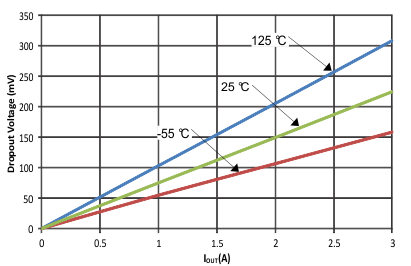SLVU944B October 2015 – October 2020 TPS7H1101-SP
3.3.6 Dropout Voltage
Drop out voltage (VDO) is the difference between the input voltage and output voltage needed to maintain regulation. VDO vs IOUT is highlighted in Figure 3-6.
 Figure 3-6 VDO vs IOUT
Figure 3-6 VDO vs IOUT